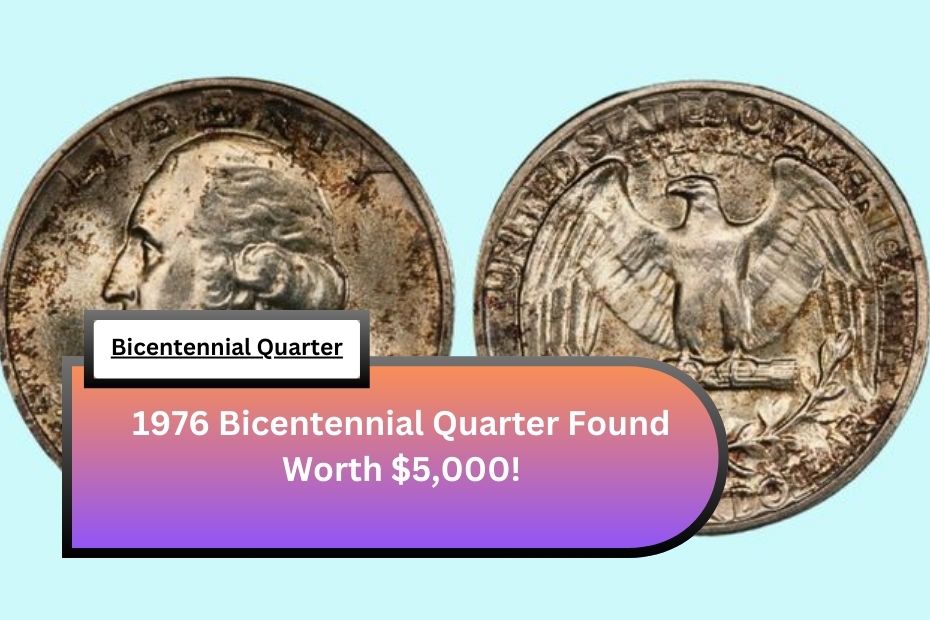The Bicentennial quarter is more than just pocket change—it’s a slice of American history! Minted in 1975 and 1976, these quarters feature the iconic “1776–1976” dual date and a colonial drummer design that commemorates America’s 200th birthday. While most Bicentennial quarters are worth their face value of 25 cents, a few rare ones are worth thousands of dollars! These rare coins could help you fund a luxurious vacation. Here are the top two valuable Bicentennial quarters to look for.
1976 Bicentennial Quarter Struck on a Silver Planchet
Most Bicentennial quarters were made from copper-nickel clad metal, but some were mistakenly struck on 40% silver planchets meant for collector sets. These silver planchet coins are rare and highly sought after by collectors.
What Makes It Valuable?
- Material Difference: The silver content makes these quarters heavier than standard ones.
- Unique Error: This mistake occurred during minting, making it a prized error coin.
How Much Is It Worth?
High-quality examples of these quarters can sell for $3,000 to $5,000 or more, depending on their condition.
How to Identify It
- Check the Weight: A standard copper-nickel quarter weighs 5.67 grams, while the silver version weighs about 6.25 grams.
- Appearance: They look almost identical to regular quarters but might have a slightly different tone due to the silver.
If you find a Bicentennial quarter that seems heavier than usual, it’s worth getting it authenticated by a professional coin grading service.
1976 Bicentennial Quarter with a Double Die Obverse
Another valuable error coin is the Bicentennial quarter with a double die obverse. This error occurs when the coin is struck twice, creating a “doubled” image on the front side of the coin.
What Makes It Special?
- Rare Minting Error: The doubled design, especially on the words “LIBERTY” and “IN GOD WE TRUST,” makes it a collector’s favorite.
- Unique Appearance: The doubling effect adds a distinct and noticeable feature to the coin.
How Much Is It Worth?
These coins can sell for $500 to $3,000, depending on the condition and prominence of the doubling.
How to Identify It
- Examine Closely: Use a magnifying glass to look at the lettering, especially “LIBERTY” and “IN GOD WE TRUST.”
- Condition Matters: The better the condition, the higher the value.
Why These Coins Are So Valuable
The combination of a historically significant design and rare minting errors makes these Bicentennial quarters extremely desirable. Collectors are willing to pay top dollar for unique coins that tell a story of America’s past.
How to Find These Rare Quarters
- Check Your Change: You might have one hiding in your pocket or coin jar.
- Inspect Collections: Look through old collections or rolls of quarters.
- Get Expert Help: If you suspect you’ve found a rare Bicentennial quarter, consult a professional coin appraiser.
Conclusion
The Bicentennial quarter isn’t just a piece of American history—it’s a potential treasure. Rare varieties like the silver planchet error and the double die obverse can fetch thousands of dollars. By carefully examining your loose change, you might discover one of these valuable coins. Imagine turning a simple quarter into a ticket for your dream vacation—that’s the magic of coin collecting!
FAQs
1. What makes the 1976 Bicentennial Quarter valuable?
Its rarity and unique design make it sought after by collectors, particularly in high-grade condition.
2. How much is a 1976 Bicentennial Quarter worth?
It can be worth up to $5,000 depending on its condition and specific minting details.
3. What features distinguish the 1976 Bicentennial Quarter?
It features a special reverse with a drummer boy and a 13-star design to mark the U.S. Bicentennial.

